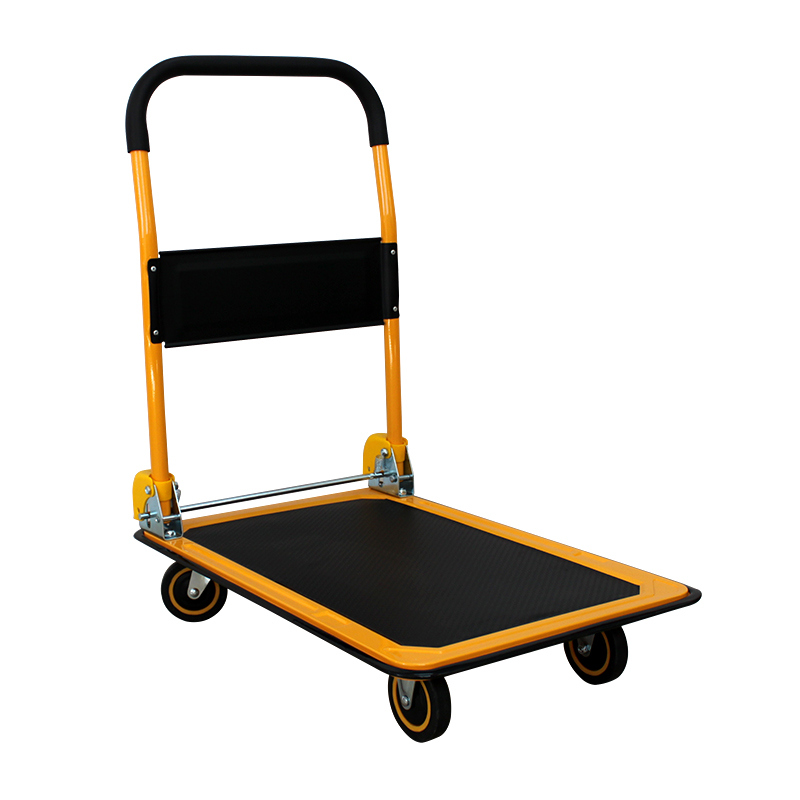Handling dynamic or shifting loads can be challenging for a folding platform trolley. Here are some considerations for how a trolley might manage these types of loads:
Design Features
Platform Size and Shape: A larger and more stable platform helps distribute weight more evenly, which can be crucial when dealing with shifting loads.
Load Securing Mechanisms: Features such as straps, nets, or built-in tie-down points can help secure loads and prevent them from shifting during movement.
Wheel Configuration
Wheel Type: High-quality, large, and robust wheels can absorb shocks better and provide a smoother ride, reducing the impact of dynamic loads.
Wheel Locking: Wheels with locks or brakes can help stabilize the trolley when stationary, especially when loading or unloading.

Stability Features
Anti-Tip Design: Some trolleys include anti-tip features, such as stabilizing bars or wider wheelbases, which improve stability during movement.
Shock Absorption: Some models may incorporate shock-absorbing materials or designs to mitigate the effects of dynamic loads.
Load Handling
Weight Distribution Guidelines: Following the manufacturer’s guidelines on load distribution can help manage shifting loads more effectively. Evenly distributed loads are less likely to shift significantly.
Handling Techniques: Proper handling techniques, such as gradual acceleration and deceleration, can help manage shifting loads and prevent tipping.
User Experience
Feedback on Dynamic Use: User reviews and feedback can provide insights into how well the trolley performs with dynamic or shifting loads and if any common issues have been reported.
Manufacturer Recommendations
Safety Guidelines: The manufacturer may provide specific recommendations for handling dynamic loads safely, including best practices and limitations.
These considerations will help you understand how well a folding platform trolley can handle dynamic or shifting loads and what features to look for to ensure safe and effective operation.



 English
English Español
Español














